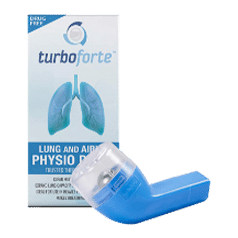Study
Oscillating Positive Expiratory Pressure on Respiratory Resistance in Chronic Obstructive Pulmonary Disease With a Small Amount of Secretion: A Randomized Clinical Trial
Finding
“The use of flutter can decrease the respiratory system resistance and reactance and expiratory flow limitation in stable COPD patients with small amounts of secretions.”
Abstract
Chronic obstructive pulmonary disease (COPD) is characterised by airflow limitation that is not fully reversible, and is usually progressive and associated with an abnormal inflammatory response of the lungs to noxious particles or gases, most commonly cigarette smoking. The disease affects not only the large central airways but also the small, more peripheral airways deeper into the lung, defined as less than 2 mm in diameter.
Besides medical treatment, physiotherapy plays a major role in treatment and various methods have been suggested to remove airway of secretions. The flutter is a simple and small device shaped like a pipe that creates a positive expiratory pressure (PEP) and high frequency oscillation when the expired air passes through it. These vibrations are thought to mobilise airway secretions facilitating their clearance and improving breathing.
Standard blowing tests, like spirometry, where patients blow forcedly into a machine, have previously been used to investigate the efficacy of flutter devices. However, spirometry assesses the damage of larger airways but not small airways, also known as the “silent zone” which, crucially, are specifically damaged in COPD.
In this study the investigators hypothesise that because the flutter helps clear the airways from the excessive thick mucus produced by COPD patients, these patients may find it easier to breathe and have lower resistance to moving air in and out of their lungs.
The main objective of this study is to compare the effect of a flutter or a sham device on small airways damage using impulse oscillometry (IOS), a non-invasive method that, contrary to other common blowing tests, measures small airway resistance during normal breathing.
In addition, because COPD is characterised by inflammation, the investigators would also like to measure a gas the patients blow out, nitric oxide (NO) the levels of which reflect airway inflammation. This will give to investigators an insight into the relationship between airway inflammation and small airway function.
https://clinicaltrials.gov/ct2/show/results/NCT01832961
Cited
Gastaldi AC, Paredi P, Talwar A, Meah S, Barnes PJ, Usmani OS. Oscillating Positive Expiratory Pressure on Respiratory Resistance in Chronic Obstructive Pulmonary Disease With a Small Amount of Secretion: A Randomized Clinical Trial. Medicine (Baltimore). 2015 Oct;94(42):e1845. doi: 10.1097/MD.0000000000001845.




